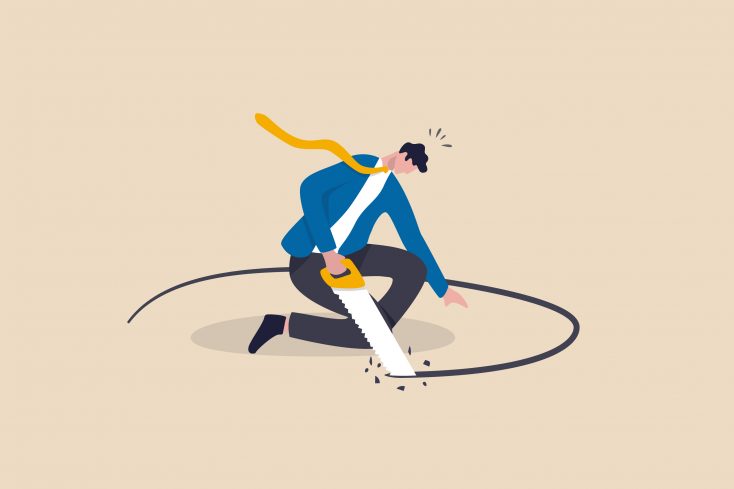What is decision resilience? Decision resilience is NOT about leaders showing “the courage of their convictions” or sticking with a decision when faced with challenges – I consider that to be resolve, or in some instances, inflexibility.
Rather, decision resilience (as I define it) refers to how resilient a decision-maker’s brain is to misperceiving reality as a result of innate survival mechanisms.
Obviously, making a good decision begins with accurately perceiving the situation, facts, and possible outcomes. Yet, studies show that people’s brains can change their perceptions of reality to promote survival, without them being aware of it.
For example, distances can appear farther when looking down from a height (Jackson & Cormack, 2007), peer pressure can change what people see (Asch, 1951), and social influences can alter brain regions involved with perception (Berns et al., 2005). These brain-shifts are survival mechanisms – exaggerated heights scare us away from dangerous falls, and matching our perceptions to the social majority protects us from being outcast. Without us realizing it, our brains even filter what we see, hear, and feel (Torrico & Munakomi, 2021) to focus our attention on what’s most important (e.g., survival).
Interestingly, the studies also showed that some people’s perceptions changed less than others. Some people’s perceptions of heights shifted less than others. And some people’s perceptions didn’t change in response to peer pressure. Or in other words, some people appear to be more resilient to misperceiving reality; and thus, better equipped to make sound decisions.
These findings beg the question: for practical purposes like choosing the best decision-makers, is there a way to assess a person’s decision resilience?
Yes, there is – as a Business Psychologist with 20 years of experience in psychometric assessments, I’ve developed an assessment called The Decision Resilience Instrument (DRI). It’s available online, and takes about 25-minutes to complete.
If you’re interested in the Decision Resilience Instrument (DRI), please email me, Dr. Gary Dumais, at garydumais@gmail.com
References:
Asch, S. E. (1951). Effects of group pressure upon the modification and distortion of judgments. In H. Guetzkow (Ed.), Groups, leadership and men; research in human relations (pp. 177–190). Carnegie Press.
Berns, G. S., Chappelow, J., Zink, C. F., Pagnoni, G., Martin-Skurski, M. E., & Richards, J. (2005). Neurobiological correlates of social conformity and independence during mental rotation. Biological psychiatry, 58(3), 245–253.
Jackson, R. E., & Cormack, L. K. (2007). Evolved navigation theory and the descent illusion. Perception & psychophysics, 69(3), 353–362. Torrico, T. J., & Munakomi, S. (2021). Neuroanatomy, Thalamus. In StatPearls. StatPearls Publishing.




